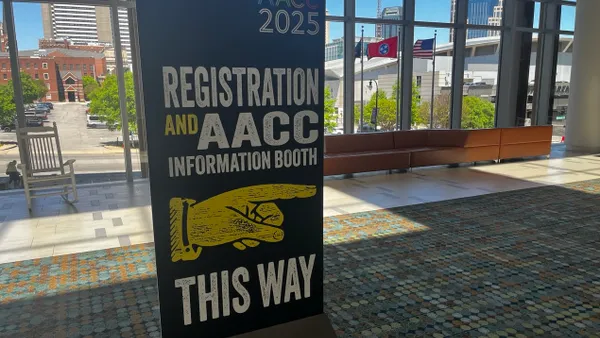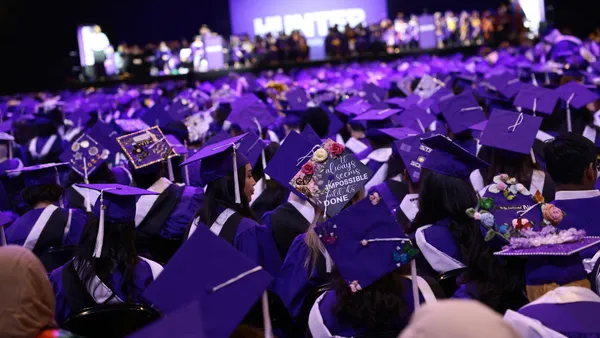Dive Brief:
- Top officials at the Massachusetts Institute of Technology have blamed last year's U.S. Supreme Court decision barring race-conscious admissions for lowering diversity in the institution’s incoming class compared to cohorts of recent years.
- Of MIT’s 1,102 incoming first-year students, around 16% said they are Black, Hispanic, Native American, Pacific Islander or identify with more than one of those groups. However, in the past few years, those groups made up about 25% of the top-ranked college’s incoming first-year undergraduates.
- Despite recent university initiatives to broaden access, the numbers reflect a “substantial change in the demographic composition” of MIT’s incoming class compared to recent years, according to Stu Schmill, MIT’s dean of admissions and student financial services. “Clearly, we still need to do more to ensure MIT remains a destination for the best talent from all backgrounds,” Schmill said in a Q&A posted online.
Dive Insight:
MIT’s incoming class data offers one of the first looks at how the admissions landscape has changed at top-ranked universities following the Supreme Court’s landmark decision.
“The class is, as always, outstanding across multiple dimensions,” MIT President Sally Kornbluth said in a video message last week about the data. “But what it does not bring, as a consequence of last year’s Supreme Court decision, is the same degree of broad racial and ethnic diversity that the MIT community has worked together to achieve over the past several decades.”
Overall, the incoming class represents declines in several underrepresented racial and ethnic groups, while the share of Asian Americans ticked up. The percentage of White students stayed mostly level compared to recent years.
Black or African American students saw the steepest declines, according to data shared Wednesday. Just 5% of MIT’s first-year undergraduates are Black or African American, down from an average of 13% of the university’s incoming class members over the previous four years.
Additionally, only 11% of MIT’s first-year students are Hispanic or Latino, compared with an average of 15% of the institution’s previous four incoming classes.
Similarly, American Indian or Alaskan Native students make up 1% of the new first-year class, falling from a 2% average over the past four years. Native Hawaiian or Pacific Islander students dipped below 1% of MIT’s incoming class. This group had averaged 1% of incoming classes over the previous four years.
Meanwhile, 47% of MIT’s incoming first-year undergraduates are Asian American, up from a 41% average over the past four years. The share of White or Caucasian students fell slightly, representing 37% of MIT’s incoming class. That’s down from 38% on average over the previous four years.
The university’s incoming class may have looked different without the Supreme Court’s ban on race-conscious admissions, Schmill suggested.
“We did not solicit race or ethnicity information from applicants this year, so we don’t have data on the applicant pool,” Schmill said. “But I have no doubt that we left out many well-qualified, well-matched applicants from historically under-represented backgrounds who in the past we would have admitted — and who would have excelled.”
Indeed, some data suggests the Supreme Court ruling hasn’t deterred racial and ethnic minority students from applying to college.
Common App recently found that growth in applications to its member colleges from racial and ethnic minority students increased at a faster clip than that of nonminority students. With 1,000-plus members, Common App offers a glimpse into higher education trends, though MIT is not on the platform.
MIT officials pointed to several efforts they launched in the wake of the high court's ruling in the case involving Harvard University and the University of North Carolina at Chapel Hill.
That includes a new policy guaranteeing that most students from families earning under $75,000 won’t have to pay anything to attend MIT. The university also launched an outreach program to encourage rural students to apply.
Schmill said the admissions team has been gathering ideas for new efforts from faculty, students and administrators. Likewise, Kornbluth said she has charged a faculty-led committee on undergraduate admissions and financial aid with helping explore “the best path forward.”












